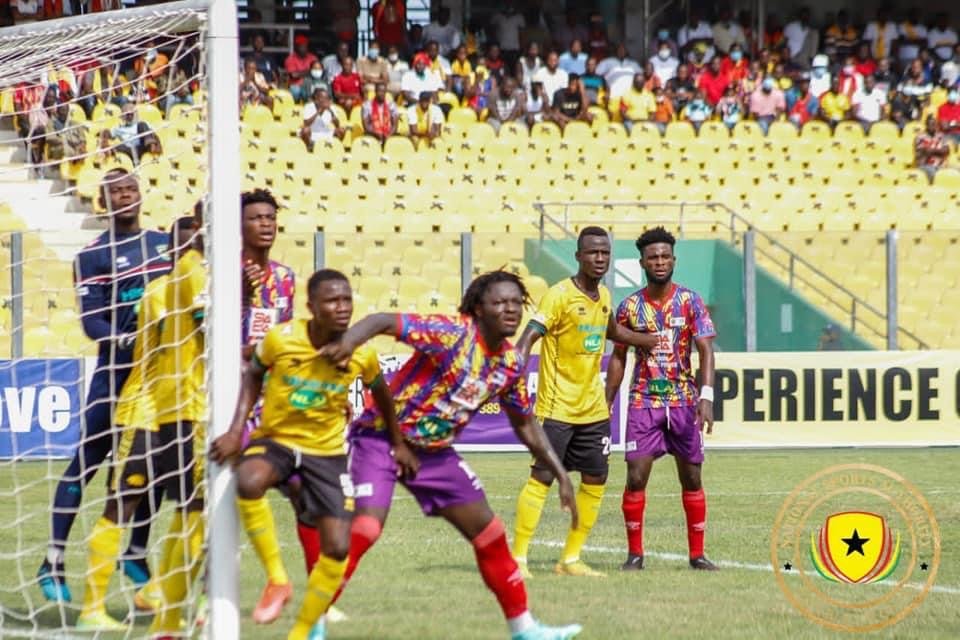By Ken Bediako
So the 2022-23 National football league that has just begun to gather momentum, is suspended due to a court injunction. I am not in the least surprised though.
Right from the beginning of the GFA-Ashgold tussle, I sensed there could be confusion in the end.
Since it is not allowed to comment on court cases I shall hold my peace and await the final outcome of the injunction. The implications of this stalemate are enormous and I am particularly tickled by a press release from the National Sports Authority that said the NSA was greatly worried by the developments because it would be a great financial loss to the government and the agencies that had made heavy investments in the playing facilities. It is their expectation the GFA would expedite action to settle the impasse.
This impasse is uncalled for it’s not the first time in the 64-year-old history of the Ghana League.
Football historians will tell you in 1984 an injunction by Bolgatanga Union Uppers against Neoplan Stars from Kumasi delayed the start of the league originally scheduled for April 1. With the long battle in the courts, the GFA at the time decided to go ahead with the competition on April 28.
Union Uppers had argued in court that they were the bona fide qualifiers from the middle league to the Premier division and not Neoplan Stars.
An Accra High Court judge, G. D. Hayfron, ruled that if the league was allowed to start. Union Uppers would forever be prevented from taking part as a Premier division club unless they subsequently qualified to play in the first division. The GFA did not appear interested to be playing football in the law courts and the case could not be resolved.
The GFA therefore strategically went ahead with the original fixtures that included Neoplan Stars. But since the Kumasi-based club could not honour the fixtures because of the court case in question they were presumed to have technically lost all their matches and were placed last on the league table and subsequently demoted.
Incidentally, on July 4, about four months later, an Accra High Court came out with a final ruling that Union Uppers were entitled to promotion into the top league. The court said the GFA erred in the manner it ordered a replay of the Union Uppers-Alluvial Dredgers match at Dunkwa, which earlier failed to travel the full 90 minutes owing to the invasion of the pitch by supporters of Dredgers.
It said in view of the evidence presented by Uppers, they should have been awarded the two points and two goals in accordance with the laws of the game. This would have qualified them for promotion to the top division.
The league had travelled quite far at the time of the final court ruling and the GFA might have considered it unrealistic to start all over again.
There was another court case the following season, that is 1985. Cape Coast Venomous Vipers took the GFA to
court for disqualifying the club, following an alleged double registration involving their top player, Yaw Akoto. This delayed the start of the league considerably.
Perhaps to avoid the repetition of the 1984 episode involving Union Uppers and Neoplan Stars, the Ministry of Sports had to intervene and the case was withdrawn from court. As a compromise, four clubs, Vipers, Goldfields, Dwarfs and Techiman Holy Stars were promoted on a silver platter to increase the number of premier division clubs from 12 to 14. It was then decided that three clubs would go down at the end of the season.
Please note that the Ministry of Sports was not passive at the time but played a fatherly role to earn a useful compromise. Clearly not in these days of “football people” being the monarchs of all they survey.
The fact is the running of the league right from its inception in 1958 had been in the firm grips of Ohene Djan, that gem of a sports administrator until the 1966 coup that toppled Dr Kwame Nkrumah’s regime changed the narrative.
Before the coup, sports and politics mixed freely in the country and it was fashionable to give credit to President Nkrumah for all Ghana’s success in sports. Even the controversially formed model football club, Real Republikans, was nicknamed Osagyefo’s Own Club (OOC).
So when he was toppled and there was so much animosity against him, Ohene Djan had no option but to openly dissolve the club at a press conference. Hear him, “The mood of the country made it a national taboo for any club to operate in Ghana under the inglorious insignia of Osagyefo’s Own Club.” Thus, Republikans the model club and Black Stars in disguise, was dissolved. Experienced Stars like Addo Odametey and Ofei Dodoo returned to Hearts, Kofi Pare, Ben Acheampong and Franklin Crentsil signed for Kotoko, Owen Oblitey, Dodoo Ankrah and Jones Attuquayefio moved to Olympics.
Ohene Djan himself was sacked and replaced by Mr W.T. Marbell, a retired school teacher whilst H. P. Nyemitei was appointed GFA chairman.
Also, a 14-club league was started on March 13 but cancelled in mid-December. The cancellation was sparked off by Asante Kotoko, Great Ashanti and Cornerstone due to unemployment problems. Most of their players worked for state owned organisations like Farmers Council and Workers Brigade. They had been laid off in the wake of the new political changes at the time.
In the wake of the new wind of change blowing in the country, clubs from all over the regions clamoured to compete in the league. This desire led to six more clubs for the total to jump to 20. The new entrants were Tema Hurricanes, Accra Standfast, Agona Fankobaa, Ho Mighty Eagles, Akim United and Ho Sunset.
Conspicuously absent was a team from the Northern Region, a big anomaly.
This was a protracted league which started on Feb 1 1967 to Sep 30. 1968 about 19 months but it was still abridged due to numerous stoppages for international programmes including the Mexico Olympics.
Indeed, since those few confusing skirmishes in the late sixties, Ghana had come a long way with attractive league programmes. Until the so called “Anas Expose” in 2018 that muddied the waters, the league had continued to be a passion of the nation, producing a large number of real talented footballers for top European clubs.
When the dust settled after the FIFA sponsored national football reorganisation exercise, headed by Dr Kofi Amoah, Accra Hearts of Oak, the oldest existing top division club and the first league champions won the title in the 2019-2020 season, followed in the 2021-22 season by perennial title holders, Asante Kotoko, the best supported team in the country.
It’s unfortunate that when the current season has started in earnest with a new title sponsor a court injunction has suddenly killed the enthusiasm of football fans.
It is hoped sanity will prevail soonest so sports enthusiasts will continue to enjoy their weekend pastime while awaiting the much heralded Qatar 2022 FIFA World Cup featuring the renascent Black Stars of Ghana and the upcoming 2023 Africa Games to be hosted by Ghana.
Cheers everybody and keep loving sports.
Credit: Ken Bediako


